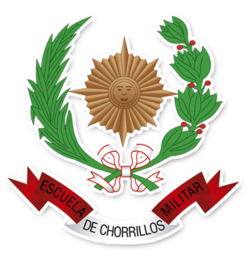Spanish: Escuela Militar de Chorrillos | |
 | |
| Motto | Spanish: Disciplina, Moral y Equidad |
|---|---|
Motto in English | Discipline, Moral and Equity |
| Type | Military academy |
| Established | January 30, 1830 |
| President | Brig. Gen. Carlos Alberto Rabanal Calderon |
| Address | Av. Escuela Militar S/N, Chorrillos , , |
| Website | www |
 | |
The Chorrillos Military School (Spanish : Escuela Militar de Chorrillos) is the institution in charge of the undergraduate education of officers of the Peruvian Army.